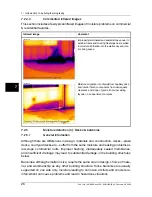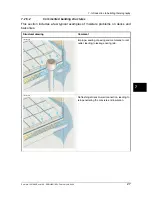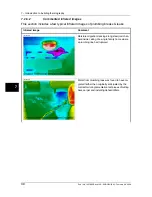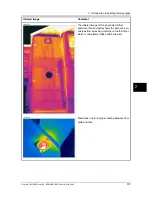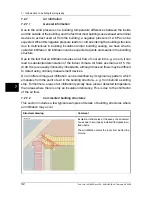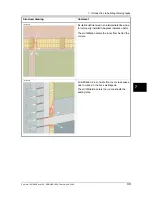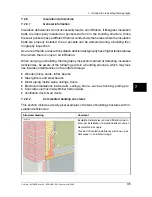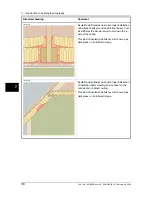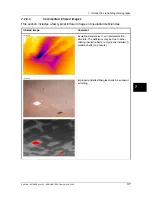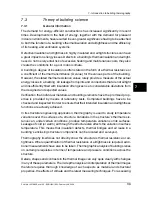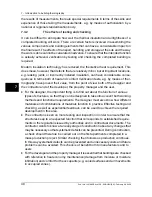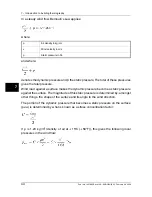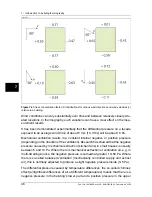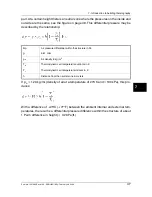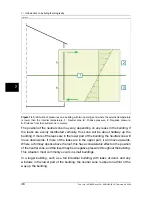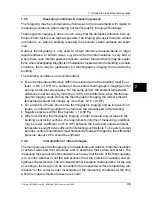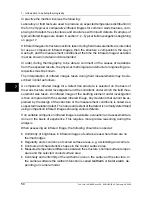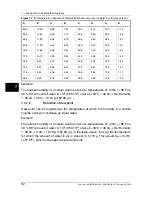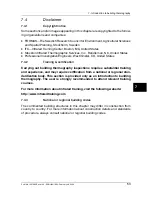
7.3
Theory of building science
7.3.1
General information
The demand for energy-efficient constructions has increased significantly in recent
times. Developments in the field of energy, together with the demand for pleasant
indoor environments, have resulted in ever-greater significance having to be attached
to both the function of a building’s thermal insulation and airtightness and the efficiency
of its heating and ventilation systems.
Defective insulation and tightness in highly insulated and airtight structures can have
a great impact on energy losses. Defects in a building’s thermal insulation and airtight-
ness do not merely entail risk of excessive heating and maintenance costs, they also
create the conditions for a poor indoor climate.
A building’s degree of insulation is often stated in the form of a thermal resistance or
a coefficient of thermal transmittance (
U
value) for the various parts of the building.
However, the stated thermal resistance values rarely provide a measure of the actual
energy losses in a building. Air leakage from joints and connections that are not airtight
and insufficiently filled with insulation often gives rise to considerable deviations from
the designed and expected values.
Verification that individual materials and building elements have the promised prop-
erties is provided by means of laboratory tests. Completed buildings have to be
checked and inspected in order to ensure that their intended insulation and airtightness
functions are actually achieved.
In its structural engineering application, thermography is used to study temperature
variations over the surfaces of a structure. Variations in the structure’s thermal resis-
tance can, under certain conditions, produce temperature variations on its surfaces.
Leakage of cold (or warm) air through the structure also affects the variation in surface
temperature. This means that insulation defects, thermal bridges and air leaks in a
building’s enclosing structural components can be located and surveyed.
Thermography itself does not directly show the structure’s thermal resistance or air-
tightness. Where quantification of thermal resistance or airtightness is required, addi-
tional measurements have also to be taken. Thermographic analysis of buildings relies
on certain prerequisites in terms of temperature and pressure conditions across the
structure.
Details, shapes and contrasts in the thermal image can vary quite clearly with changes
in any of these parameters. The in-depth analysis and interpretation of thermal images
therefore requires thorough knowledge of such aspects as material and structural
properties, the effects of climate and the latest measuring techniques. For assessing
7
Publ. No. 1557882 Rev. a156 – ENGLISH (EN) – February 28, 2006
39
7 – Introduction to building thermography
Содержание ThermaCAM B2
Страница 2: ......
Страница 4: ......
Страница 6: ......
Страница 7: ...ThermaCAM B2 User s manual Publ No 1557882 Rev a156 ENGLISH EN February 28 2006...
Страница 10: ...Reg No Status Designation 29 233 400 Pending U S x Publ No 1557882 Rev a156 ENGLISH EN February 28 2006...
Страница 16: ...INTENTIONALLY LEFT BLANK 1 2 Publ No 1557882 Rev a156 ENGLISH EN February 28 2006 1 Warnings cautions...
Страница 26: ...INTENTIONALLY LEFT BLANK 4 12 Publ No 1557882 Rev a156 ENGLISH EN February 28 2006 4 Packing list...
Страница 28: ...INTENTIONALLY LEFT BLANK 5 14 Publ No 1557882 Rev a156 ENGLISH EN February 28 2006 5 System overview...
Страница 110: ...INTENTIONALLY LEFT BLANK 12 96 Publ No 1557882 Rev a156 ENGLISH EN February 28 2006 12 Maintenance cleaning...
Страница 164: ...INTENTIONALLY LEFT BLANK 18 150 Publ No 1557882 Rev a156 ENGLISH EN February 28 2006 18 Theory of thermography...
Страница 191: ......


